For the sake of disclosure, we were supplied a copy of Inkulinati for review purposes.
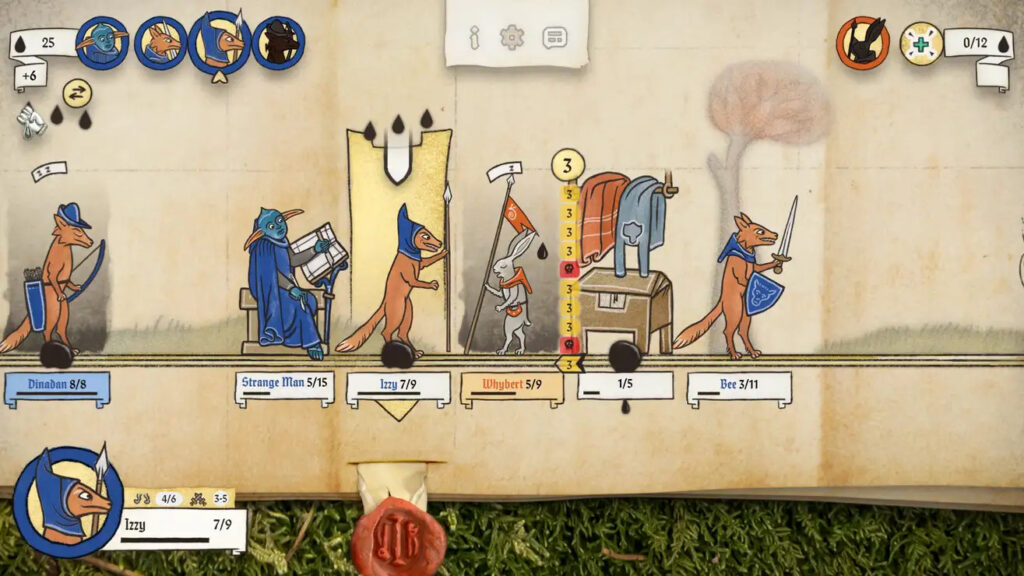
Visuals can do a lot for a game. There have been numerous games that have looked fantastic that ultimately turned out to be disappointing to downright awful, and I’ve missed out on plenty of great games that looked disgusting. So when I first saw the trailer for Inkulinati, it drew me in with a visual gimmick that I hadn’t seen done before in games, and I found myself really enjoying it. For a little while, at least.
With a visual style inspired by the paintings found in medieval manuscripts, Inkulinati is a 2D turn-based strategy where a drawing of you draws various animal units to life and battle a drawing of a different person for supremacy. At least, I think that’s what it’s about. Playing through a Journey, which is the game’s campaign mode, doesn’t really play out this narrative, though. It’s something about trying to reach Death and defeat him in a battle to revive a character called Master, who is just different enough from Yoda to not be infringing.
As you can probably tell from that last paragraph, narrative is not this game’s strong suit. But Journey is probably the game mode with the most content and replayability. Journey is a roguelike campaign mode where after selecting your starting loadout of Beasts, your animal units, and character abilities, you move through five map screens, called Acts, along a branching path. Along the way you have to manage your health, your gold that can be used to buy new units abilities, your prestige that can unlock new options in shops and new units for future runs, and your units’s Boredom which makes them harder to summon the more they’re used in battles.
Beating Journey mode grants you new starting loadouts (for lack of a better word) based on the resources you had by the end for your next run, which has six acts. Completing Act Six then lets you start a Journey with an Act Seven, each one giving a little bit more of this story of trying to resurrect Master. But that story is told entirely through text boxes with painfully unfunny dialogue and multiple dialogue options that, as far as I can tell, don’t have any actual bearing on anything. They’re just there for the sake of being there.
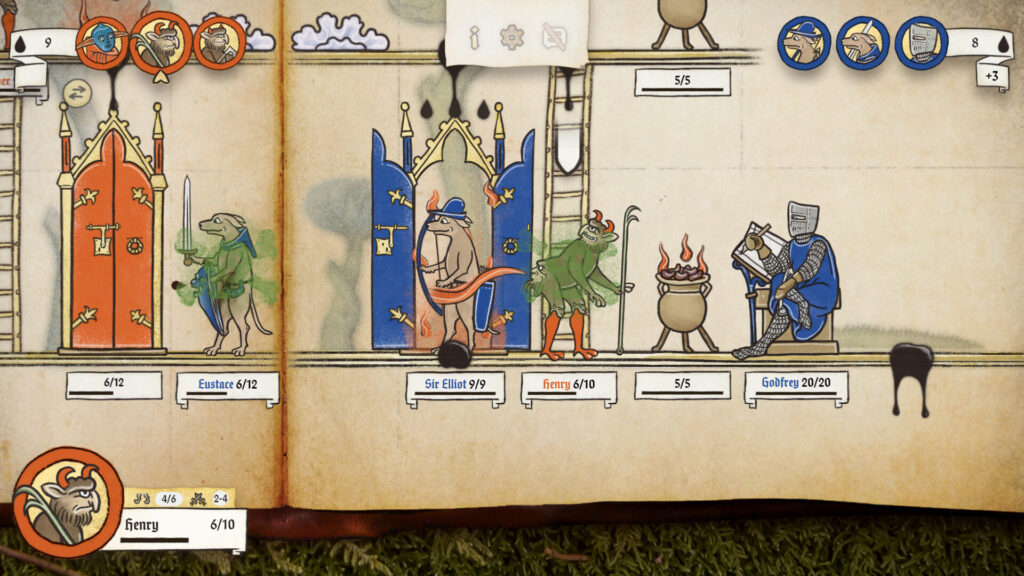
Luckily, the gameplay does make up for quite a bit of the story’s shortcomings. As mentioned, this is a strategy game. A typical battle features a unit representing you and one representing your opponent, which are called Tinys. Your Tiny can spawn Beasts using Ink, a resource that is replenished by collecting Ink Drops left behind by defeated Beasts and from random stage events every few turns. Using your Beasts, and a number of active and passive skills that your Tiny has and can collect over the course of a Journey, have to take out the enemy Tiny before their Beasts take out yours. There are also a small number of other battle types, including taking out enemy spawn points and fighting a single powerful enemy Beast with a set number of your own Beasts, that help to keep things from getting to stale.
The pace of the battles helps with that, too. After five or six turns in a battle, an Apocalypse starts, which effectively puts a turn limit on the battle as it slowly takes over the battlefield, wiping out any unit it touches. It pushes battles along, making sure none of them overstay their welcome.
Speaking of pushing, moving the enemy’s and your own units around the battlefield is a key part of this game’s strategy. Your Tiny and every single Beast unit has the ability to push either one its allies or one of the enemy’s Beasts. Given that this is a 2D game, units and obstacles cannot occupy the same space as other units, so if you get a conga line of Beasts and barrels, one shove can send a Beast to the other side of the map or right off the edge of it, which is actually one of the better strategies. A unit being pushed off the edge of any platform instantly defeats it, and this includes Tinys.
But pushing isn’t all these Beasts have. There are multiple Beast types, with each type having their own unique abilities. Rabbits grant themselves attack bonuses and become immovable at the end of their turns, donkeys inflict penalties on enemy Beasts and grant allied Beasts extra movement, birds gain damage bonuses from being adjacent to allied Beasts, and foxes, my personal favorite, steal ink from enemy Beasts when they attack. You choose a beast type each Journey run and collect other types as you progress.
Even with the surprising level of depth than can come from all these different mechanics working together, Journey was surprisingly easy. In the three or so runs I did, I typically only lost once a run. When you do lose, you lose a Quill and get the chance at a rematch, but you recover all health, Beasts lose all Boredom, and all the enemy Beasts start the rematch at half health. You get a fair number of these, as well. Normal difficulty starts you with five, and Easy gives you 15. It’s such a massive recovery that, at times, it can be better to throw a battle and get a full top up than it is to win a battle.
Like I said, though, Journey isn’t the only mode. There’s Duel, which is a single battle against either an AI opponent or another local player where you set up basically every aspect of the battle. From the arena, the starting Ink, the Apocalypse, what turn it starts, and what random events happen when. Pretty much the only thing you can’t choose is the exact loadout of your team. You have to choose a prebuilt Inkulinati Master who has set Beasts and set abilities.
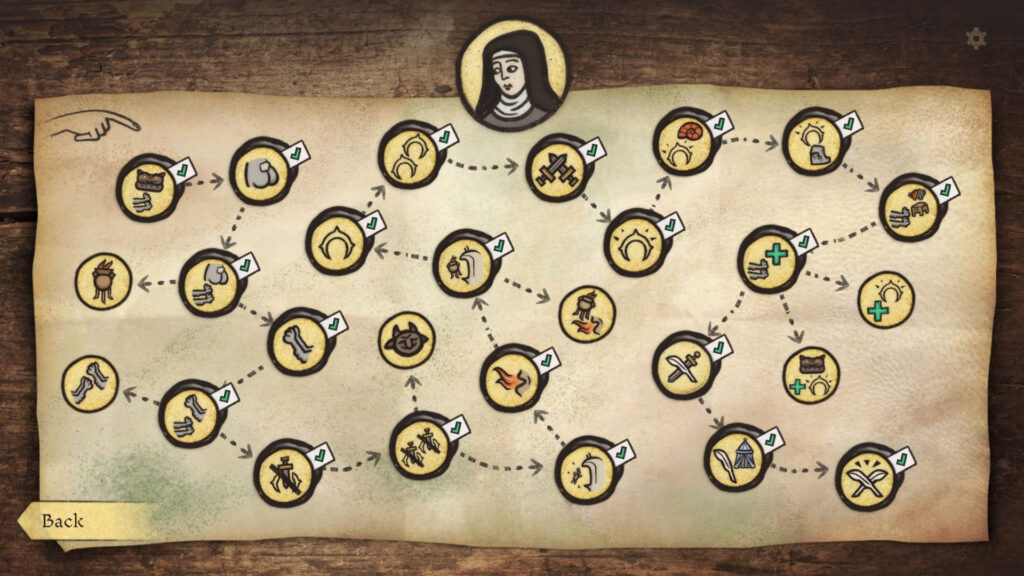
The final mode, and I only call it a game mode because of the sheer volume of it, is the Academy. This is the tutorial, but it’s set up and plays like a fighting game tutorial. Every single mechanic and almost every type of unit in this game comes with its own lesson, which explains how they work and throws you into a miniature battle for you to prove you know how things operate. It’s an insane level of tutorialization to have in a game that is not that complicated. It also doesn’t benefit from the fact that even if you complete the tutorials, Journey still has popups that explain things you already learned in the Academy.
The popups don’t end there, unfortunately. Inkulinati goes for a pretty minimal user interface, only showing the Beasts on the battlefield, yours and they enemy’s current health, Ink, abilities, and the moves a unit can do on a turn. So if you want to remember what a Beast can do, or learn what a new Beast type does, you have to turn on Tooltip Mode. In Tooltip Mode, whenever you hover over a unit, massive black boxes appear on either side of the screen explaining all of their abilities and what each keyword those abilities reference does. It’s necessary to know what Beasts and environmental objects do, but there had to have been a better way to get this information across that wasn’t this ugly.
Aside from those abrasive Tooltip prompts, the rest of the game looks pretty great. The team at Yaza Games put a lot of work into the aesthetic for the game and I think it paid off. The art for all of the Beasts and Tinys, while a little too cleanly lined, really evoke the feel of the manuscript art they were going for. It also evokes Monty Python, the British comedy troupe known for their stop motion animation using old Renaissance style art, both in style and with direct quotes. The game also has some elements of humor to it, from dialogue boxes in Journey mode to the abilities and art of Beast units. Unfortunately, the humor does fall flat a lot of the time. A donkey farting into a trumpet or a rabbit flashing his ass at an enemy unit is only kind of funny once, maybe twice, before it’s just a normal part of the game.
Inkulinati lives and dies by its unique visual style and its simple but effective gameplay. While there’s not a whole lot of content to be had, what is there can be played for a decent amount of time before it starts to become repetitive. I enjoyed the time I spent with it well enough, but I wouldn’t be surprised if I never play or think about it again.

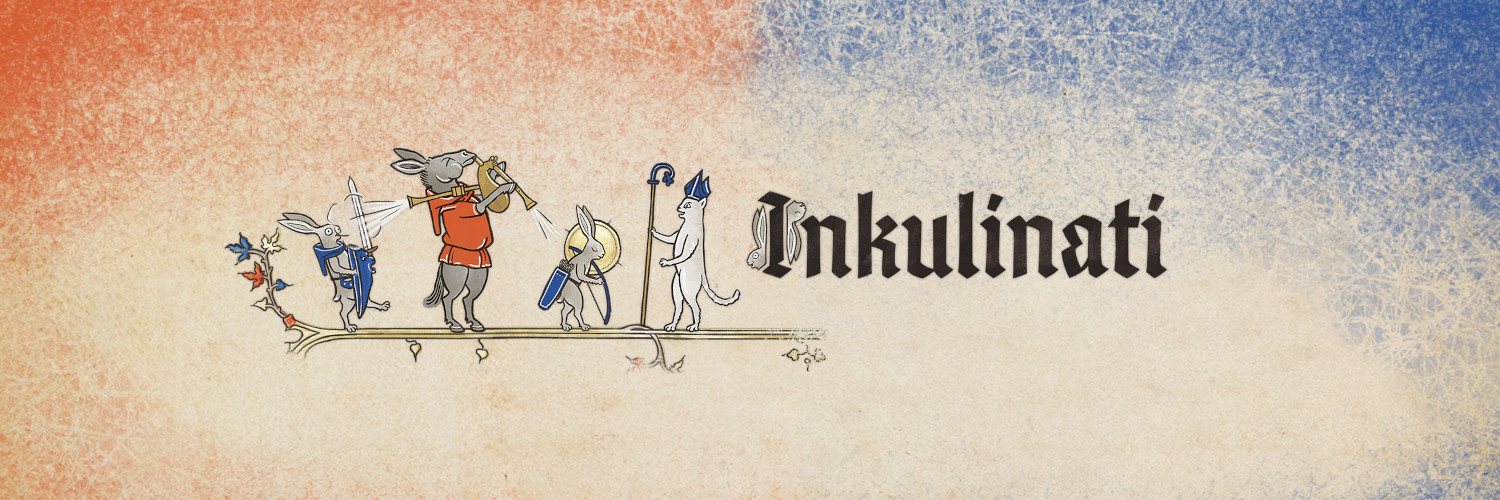
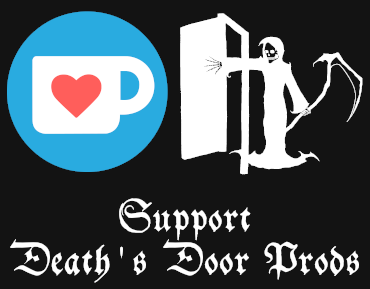

Add comment